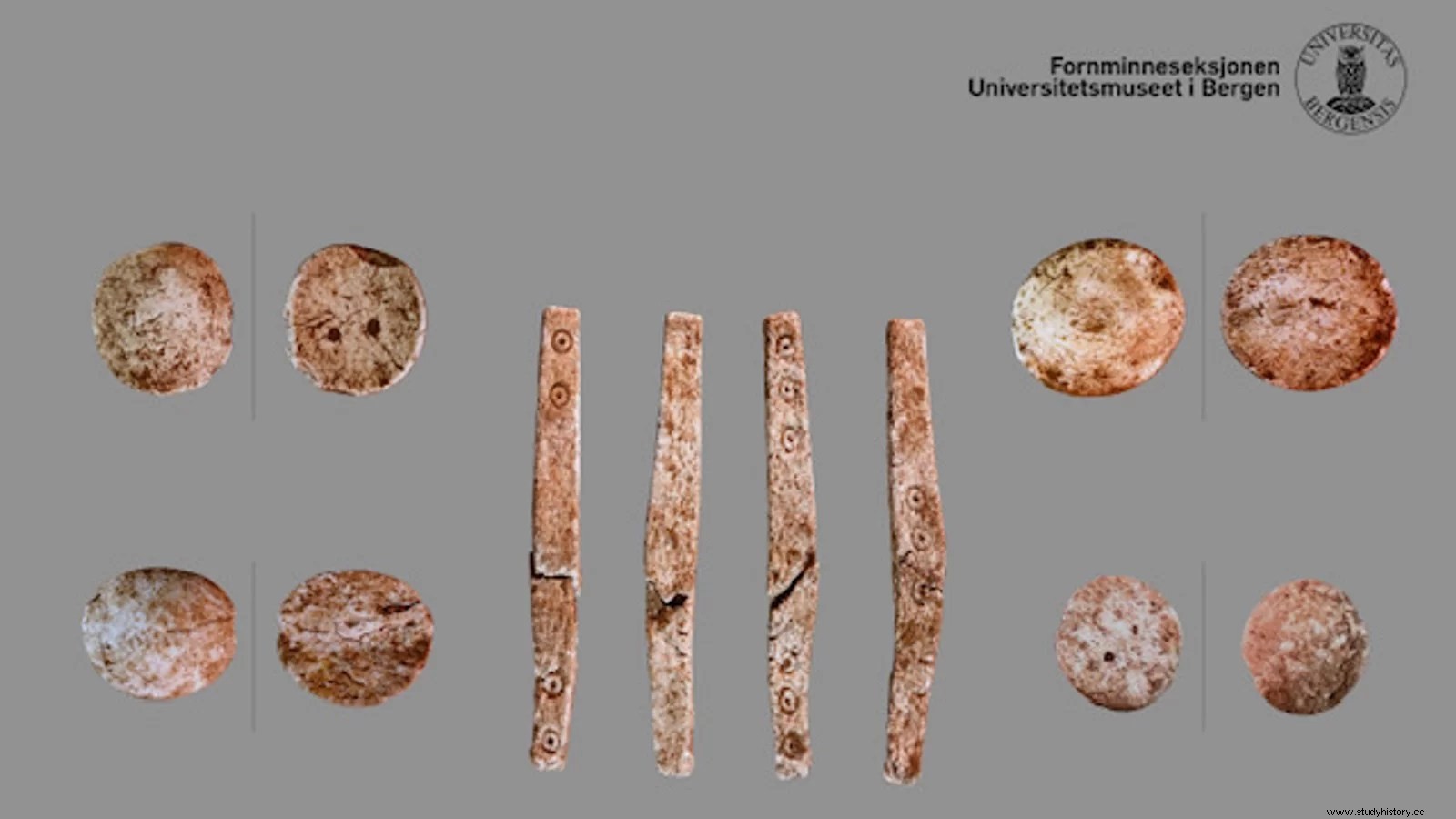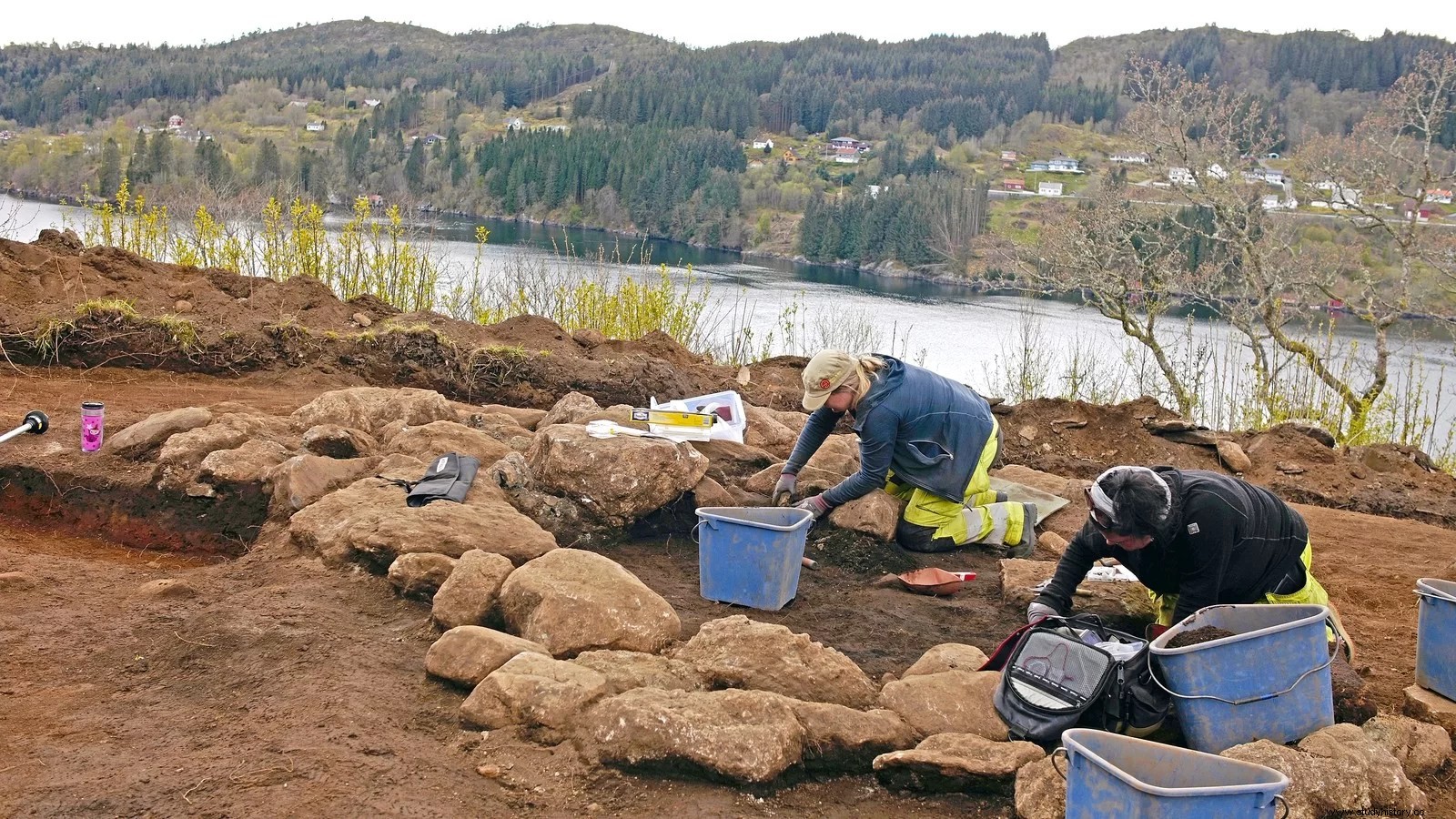Archaeologists have found the tokens and dice of an early Iron Age game in Norway. They appeared in a tomb in the Nordhordland district (in the west of the country and north of the city of Bergen), dated around 300 AD. early Iron Age (note that Iron Age dates are not the same for the Mediterranean and Northern Europe) and located in a burial mound at Ytre Fosse, near the town of Alversund.
The find consists of a total of 13 whole and 5 broken tokens, as well as a dice, as confirmed by the director of the antiquities section of the Bergen University Museum, Morten Ramstad, to the national broadcaster NRK:this guy of discoveries in Scandinavia is rare, what is special in this case is that we have found almost the whole set and not just one piece .
The tiles are marked with numbers in the form of dots, and have a value of zero, three, four and six. In total, less than 15 artifacts of this type have been previously found in Norway.
This find connects Norway to a larger network of communication and trade in Scandinavia. At the same time it can help us understand the beginning of the Iron Age in Norway said archaeologist Louise Bjerre of the University Museum.
Along with the game, the remains of what is believed to be a noble or powerful person were found. Skeletal remains, ornate pottery, and burnt glass found indicate that the person in the tomb was burned on a funeral pyre. A bronze needle was also found in the burial mound.

According to Ramstad, it is the game pieces that make the tomb different from the others:they are status objects that testify to contact with the Roman Empire, where people played board games. People who played games like this were from the local aristocracy or upper class. The game indicated that you had the time, the money, and the ability to think strategically .
The man was presumably very wealthy and in control of the Alverstraumen Strait, through which goods had to pass to and from the mainland.
If you controlled these places where people and goods passed through, you could make huge fortunes through taxes and customs says Ramstad.

The board games of the late Roman Empire were strategy games similar to chess and backgammon, which were later adopted by the Germanic peoples and made their way to Scandinavia, where Hnefatafl became a hit during the Viking Age, before the was eventually supplanted by chess.
Finding a game almost two thousand years old is incredibly fascinating. It tells us that people back then were not that different from us , Ramstad concluded.
